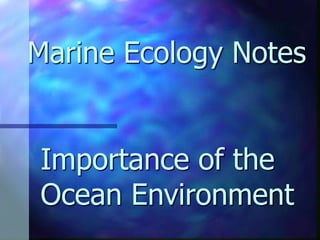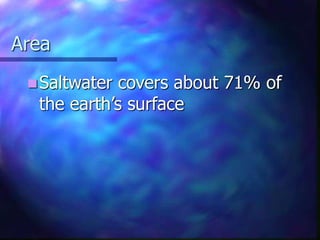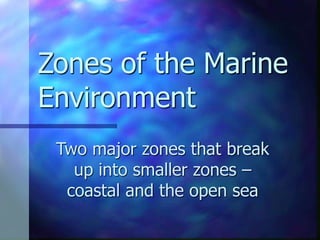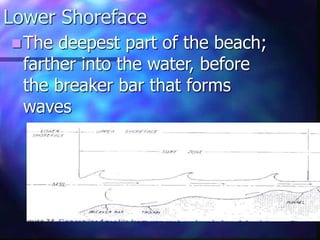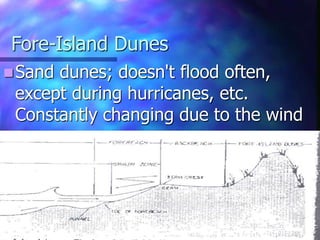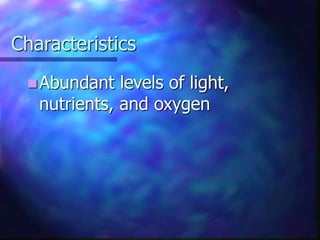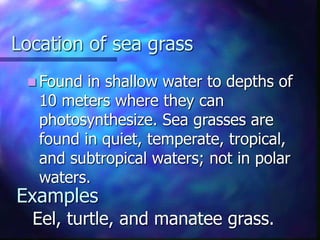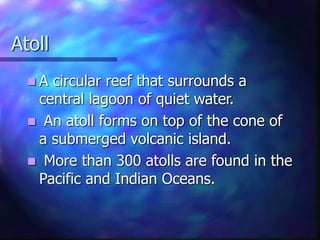The document summarizes key aspects of the marine environment, including the following:
- The ocean covers 71% of the Earth's surface and supports over 250,000 known marine species. It plays a crucial role in regulating the planet's climate and carbon levels.
- There are two major zones - coastal and open ocean. Coastal zones include estuaries, shorelines, coral reefs, and kelp forests, which provide diverse habitats. The open ocean has zones from surface waters to the deep sea floor.
- Human activities like pollution, overfishing, and climate change threaten marine life. While the oceans can dilute some pollution, dumping of hazardous waste risks further degradation of these vital ecosystems.
